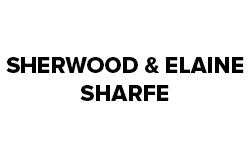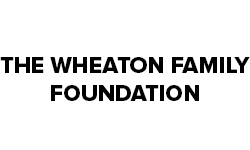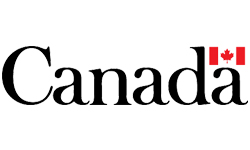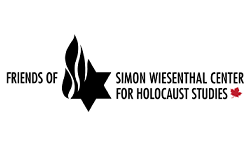GRADE 1 CITIZENSHIP STUDIES LIFELONG LEARNING CITIZENS
Part A: Curricular Connections and Background
BROAD AREA OF CITIZENSHIP
Lifelong learning citizens learn to appreciate the need for on-going learning regardless of one’s age. Students begin to realize that the world is constantly shifting and that everyone must continue to learn to adjust to new situations.
DESIRED RESULTS OF CITIZENSHIP STUDY
The concept of Canadian diversity is examined. Students learn that all individuals are unique and begin to understand that people have differing points of view which are shaped by experiences. As students learn about the similarities among cultures they begin to appreciate the opportunities that diversity brings.
An overarching goal of this year of study is for students to begin to understand the use of terminology to describe positions in space and time and the ways that maps and globes represent a variety of places and features of the earth and governance structures such as continents, countries, and provinces.
ENDURING UNDERSTANDINGS OF CITIZENSHIP STUDY
They will further examine their present behaviours to see how they may impact the future, thinking about cause and effect. Students begin to understand that their actions affect others and that they have the ability to control their actions to make changes for the future. They will be encouraged to think about their thinking in order to develop an awareness of their thought processes and understand how to initiate personal change.
- Enduring understandings are the big ideas that stimulate thinking, guide the inquiry and are linked to outcomes.
- Essential questions point to the “big ideas’ in the inquiry and should be considered and reconsidered as the inquiry progresses.
- Answers to these questions form the evidence of learning at the end of study.
Students will use information to understand that:
- Actions, behaviours, and relationships are learned and affected by the past.
- Events and ideas from the past influence the present and can influence and serve as models of how to live as a contributing citizen.
- People develop rules so that we can live together peacefully.
- Rules have differing levels of impact so people who make rules need to consider the individual good and common good.
- Diversity can have a variety of impacts and can impact points of view
- Individuals have the power to affect others and make a difference.
- Canada has a long relationship with First Nations Peoples through treaty relationships.
- Decisions have far-reaching effects, so it is important to think about the choices we make.
- Active participation leads to belonging and symbols can support belonging;
- People are connected to each other and to their environment and have a responsibility to take care of the world.
KNOWLEDGE AND SKILL DEVELOPMENT
- Practice different steps and processes to solve problems
- Consider how present actions will affect future choices
- Consider the impact of culture on behaviours and worldview
- Become aware of their thinking
- Consider the perspectives of others when trying to understand behaviours.
ESSENTIAL QUESTIONS
- How are present events related to past events?
- How does the past influence your present? Your future?
- What is my behaviour saying about what I think?
- What story is my behaviour telling?
- Is my behaviour planned or am I reacting?
CURRICULUM OUTCOMES AND INDICATORS
DR1.1
Relate family events and stories of the recent or distant past to the student’s place.
Indicators:
- Provide oral examples of traditions and celebrations that connect people to the past, and consider why these traditions and celebrations are important today.
- Construct representations of the passage of time, as related to the family (e.g., I was born, my siblings were born, family member moves away from, or into, the family home).
- Relate events and stories in chronological order, using comparisons (e.g., old and new, younger and older, before and after) relative to student ages.
DR1.2
Describe kinship patterns of the past and present and describe according to traditional teachings (e.g., Medicine Wheel teachings)
Indicators:
- Retell family stories that identify how family structures have changed over time.
- Recognize the stages of life, and that some cultures associate the stages with the teachings of the Medicine Wheel (e.g., the four directions of the Medicine Wheel correspond with the stages of life: south – infancy and childhood, west – adolescence, north – adulthood, and east – old age/death).
- Describe the functions served by various family relationships by comparing family and kinship structures within the classroom (e.g., What makes all families special? What are the benefits of living in a family? What are the roles of family members? What contributions are made by each member of the family?).
- Identify people who are connected to the basic family group through hereditary or cultural family relationships (e.g., caregivers, grandparents, parents, aunts, uncles, other significant adults).
IN1.1
Describe the diversity of traditions, celebrations, or stories of individuals in the classroom and school.
Indicators:
- Generate questions about family traditions and celebrations (e.g., Are special clothes worn? Is there special food? Are there special dances, songs, music? Are there other special cultural traditions?).
- Describe behaviours, actions, or activities that are part of students’ family traditions or celebrations.
- Gather information regarding traditions, celebrations, or stories of others by identifying and accessing various resources (e.g., family members, Elders, teachers, neighbours, library books, video clips).
- Re-tell stories about traditions and celebrations of members of the classroom (e.g., How do families spend free time? How are weddings, birthdays, anniversaries, or family reunions celebrated?).
- Compare how families recognize important family events (e.g., What is the same about how a student and a friend/classmate recognize family birthdays, weddings, deaths? What is different?).
IN1.2
Discuss cultural diversity in the family and classroom, including explorations of similarities and differences.
Indicators:
- Describe positive attributes of the individual students’ families.
- Recognize that families are varied and diverse.
- Explore the diversity of ways of life for families (e.g., language, clothing, food, ar, celebrations).
- Identify ways in which families are similar and ways in which families are different.
- Explore attributes common to cultural groups represented within the classroom and school (e.g., foods, arts, festivals, Treaties, leisure time activities, community celebrations).
Overarching Outcomes and Indicators:
DR1.4
Recognize globes and maps as representations of the surface of the Earth, and distinguish land and water masses on globes and maps.
Indicators:
- Compile a list of various types of models used as representations of real things (e.g., toys, dolls, action figures, figurines, pictures, diagrams, maps).
- Identify general characteristics of maps and gloves as models of all or parts of the earth, including reasons why certain colours are used to depict particular physical features.
- Use a globe to identify the location of places of origin for items found in the classroom and school.
DR1.5
Identify and represent the orientation in space (where) and time (when) of significant places and events in the lives of students.
Indicators:
- Identify Saskatchewan as our province and Canada as our country, and give examples of other provinces and other countries.
- Locate Canada, and the relative location of Saskatchewan, on a globe.
- Locate Saskatchewan and the relative location of the community of the school on a map of Canada.
- State the address or describe the relative location of students’ homes in the community.
- Use relative terms to describe location (e.g., above, below, near, far, left, right, front, back, in, out).
- Describe the relative location of places in the classroom and school neighbourhood.
- Construct and use maps to represent familiar places, such as the location of the student’s desk, part of the classroom or playground, incorporating the cardinal directions (i.e., north, south, east, and west).
© 2024 Concentus Citizenship Education Foundation Inc. All Rights Reserved.









